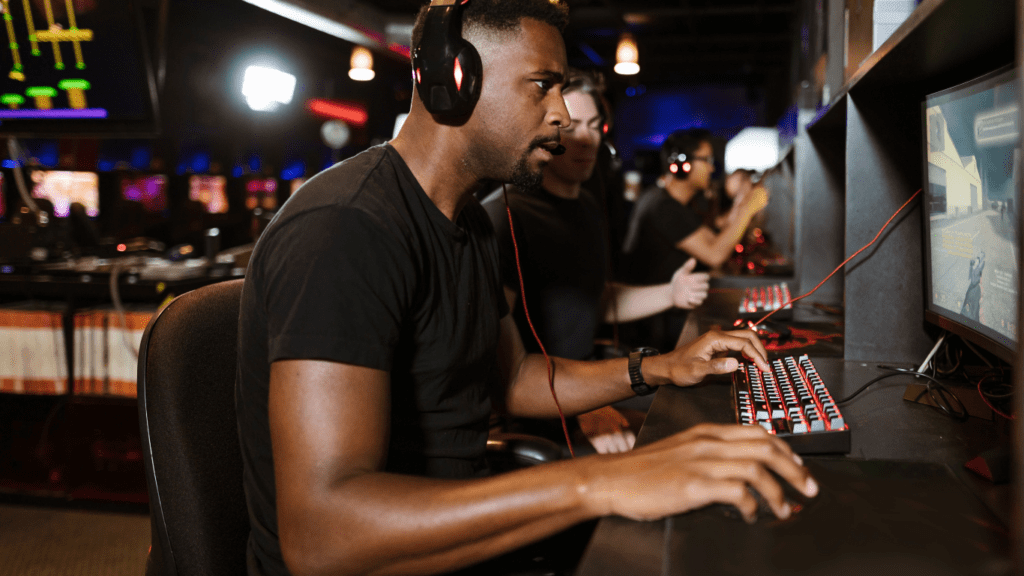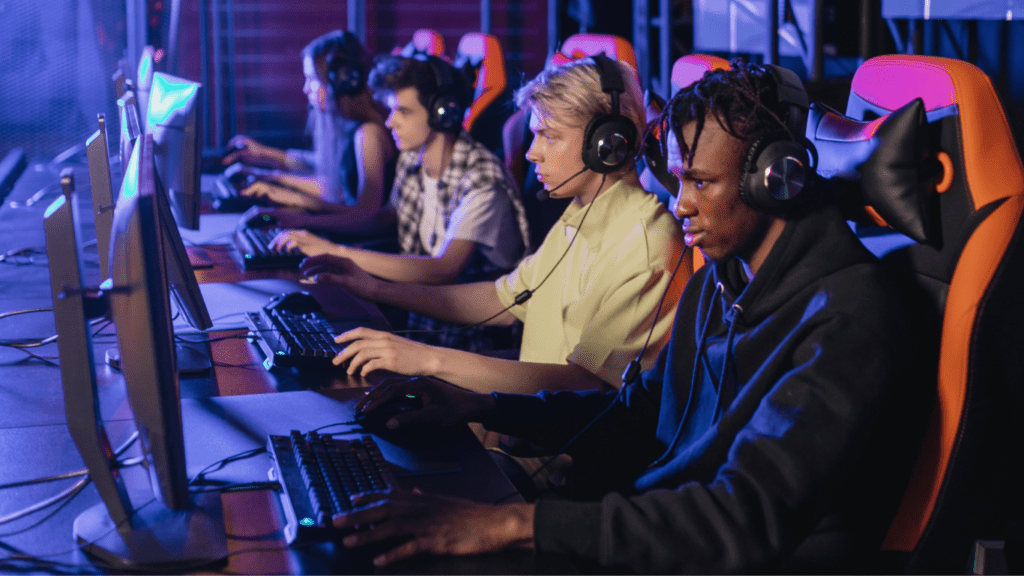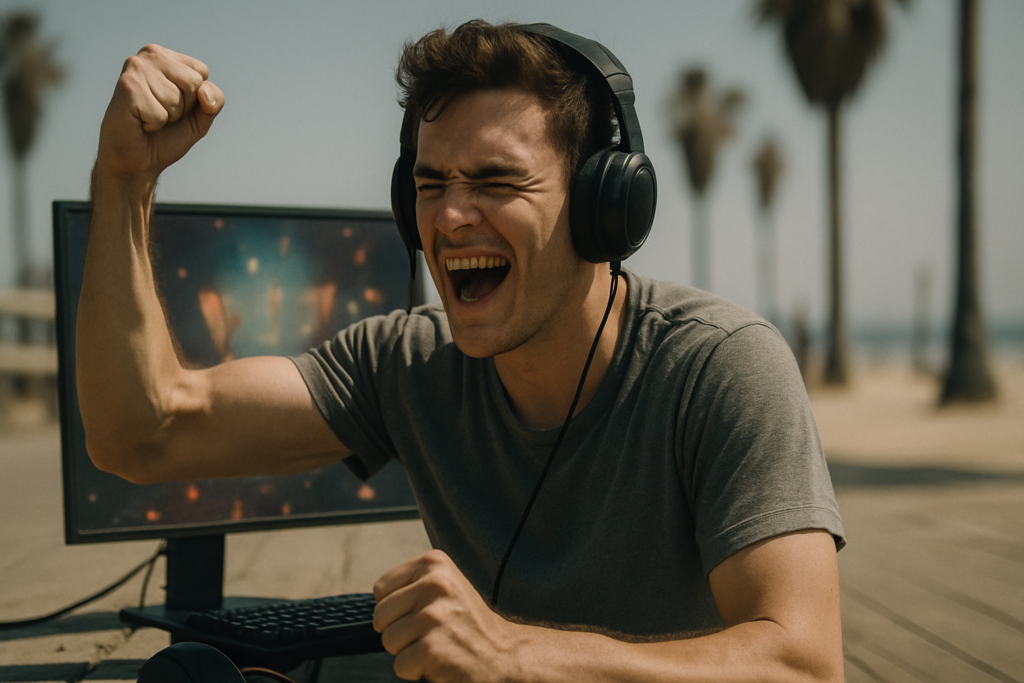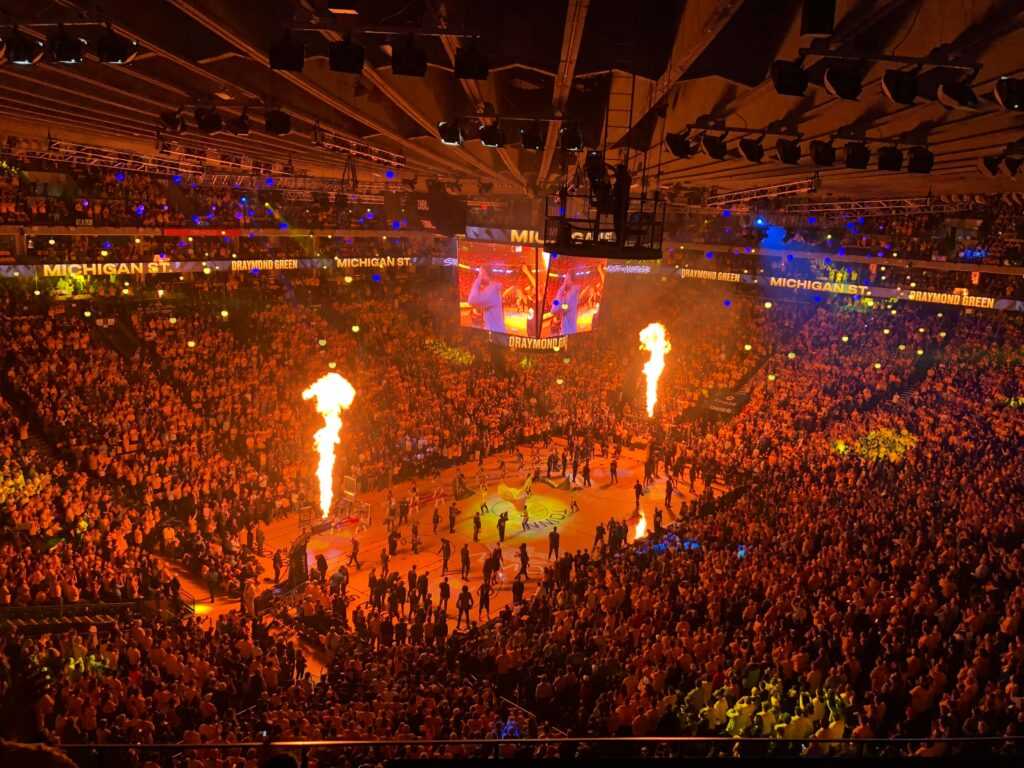Understanding the World of Competitive Gaming
Competitive gaming offers a vibrant world filled with dynamic challenges and rewards. This universe took the gaming experience to a whole new level.
The Rise of Esports
Esports experienced exponential growth over the past decade. Major tournaments like The International attracted millions of viewers, reflecting the industry’s booming popularity. Prize pools reached impressive figures, such as $40 million for Dota 2 in 2021. Professional players, who hone their skills and strategize intensively, become celebrated athletes. Streaming platforms like Twitch revolutionized viewer engagement, offering gamers a chance to showcase their talent globally.
Popular Competitive Games
Popular competitive games dominate the esports scene.
- Titles like “League of Legends” captivate players with strategic depth and team-based gameplay.
- “Counter-Strike: Global Offensive,” a first-person shooter, demands precision and tactical thinking.
- “Fortnite,” known for its building mechanics and creative modes, appealed to a broad audience, including younger gamers.
- “Overwatch” combines team play with diverse character options, requiring cooperative synergy.
- These games offer varied experiences, drawing diverse global audiences.
Developing Essential Skills
Breaking into competitive gaming requires honing a set of core skills that can set players apart. Understanding these essential skills equips aspiring pros with a competitive edge.
Mastering Game Mechanics
Understanding the intricacies of game mechanics forms the foundation of professional gaming. Each game has unique rules, characters, and interactions players must learn. For example, in “League of Legends,” mastering character abilities contributes to strategic plays. Competitive gamers spend countless hours refining their skills, from perfecting aim in “Counter-Strike: Global Offensive” to executing precise building in “Fortnite.” Familiarity with controls, game physics, and timing in various games enhances in-game performance.
Building Strategy and Teamwork
Developing sound strategies is vital for success in esports, where decisions can change the course of a match. Competitive gamers often analyze professional matches to understand strategic elements like:
- positioning
- resource management
- opponent weaknesses
In team-based games like “Overwatch,” communication and collaboration become crucial. I understand that team dynamics and role assignment impact outcomes in these games. Establishing effective communication channels and fostering trust among teammates promote cohesive gameplay and strategic execution.
Creating a Personalized Training Routine

Crafting a training routine tailored to individual needs is essential for any gamer aiming to go pro. Incorporating specific strategies accelerates skill development and optimizes performance.
Setting Goals and Milestones
Defining clear objectives creates a roadmap for progress. Specific targets, like achieving a certain rank or mastering a game mechanic, provide focus. Breaking these into milestones, such as weekly achievements or skill enhancements, helps track growth. Regularly reassessing goals ensures they remain relevant and challenging.
Analyzing and Learning from Mistakes
Improving gameplay comes from recognizing and learning from errors. Reviewing recorded matches highlights mistakes in strategy or execution. Identifying patterns helps avoid repeating them. Implementing changes and solutions in future games creates a continuous feedback loop, leading to consistent improvement.
Building Your Online Presence
Establishing a strong online presence is crucial for those aspiring to break into competitive gaming. A visible and engaging digital identity increases visibility and connects with the gaming community.
Harnessing Social Media and Streaming
Using social media platforms boosts visibility and engagement. Consistently sharing content on Twitter and Instagram showcases skills and gaming experiences. Engaging with followers by responding to comments and joining discussions fosters a sense of community. Adding humor using an online meme generator can also make your posts more shareable and relatable, helping to grow your following organically.
Streaming platforms allow gamers to display their skills to a global audience. By creating a consistent streaming schedule on Twitch or YouTube, I’m able to attract and maintain a dedicated audience. Interacting with viewers during streams adds a personal touch and builds rapport.
Networking with Other Gamers
Connecting with other gamers is crucial for growth and opportunities. Joining online forums and Discord groups focused on specific games enables sharing tips and experiences. Participating in community events creates connections with like-minded individuals.
Collaborating with other gamers expands reach and audience. By engaging in co-streams or guest appearances, I can tap into existing communities and share my expertise effectively.
Competing in Tournaments
Entering the world of tournaments is a crucial step for those looking to move from casual to professional gaming. Competing offers valuable experience and exposure in the esports community.
Finding Local and Online Events
Locating tournaments is essential for participation in competitive gaming. I explore platforms like Battlefy and Smash.gg to search for events suited to my skill level. For local insights, community forums and social media groups often announce upcoming competitions. These events vary from casual meetups to major qualifiers, catering to diverse skill levels and games.
Preparing for Competition
Preparation ensures I’m ready to face opponents. Practicing consistently sharpens my skills, while devising strategies tailored to expected competitors provides an edge. I study professional matches to understand advanced tactics and adapt them to my gameplay. Familiarizing myself with tournament rules and formats prevents penalties and confusion during events. Ensuring my equipment functions optimally, from controllers to internet connection, avoids technical disruptions. Lastly, maintaining a positive mindset enhances focus and performance under pressure.





